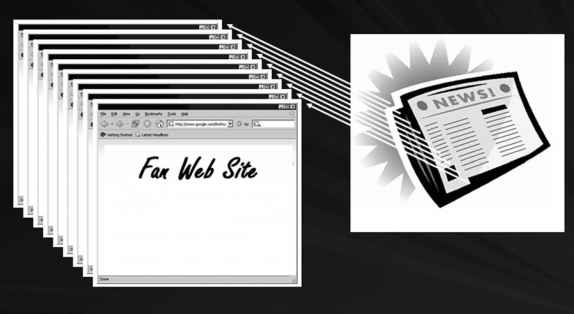Rss feeds
Wikipedia describes really simple syndication (RSS) as a family of Web feed formats used to publish frequently updated content such as blog entries, news headlines or podcasts. An RSS document, which is called a "feed," "web feed," or "channel," contains either a summary of content from an associated web site or the full text. RSS makes it possible for people to keep up with their favorite web sites in an automated manner that's easier than checking them manually.
RSS was first invented by Netscape, which wanted a way to get news stories and information from other sites and have them automatically added to its site. The RSS feed starts with the XML command (Extensible Markup Language), then the RSS command, some commands for formatting, and the location (link) for the feed.
We found early on the use of RSS feed to help market and promote our clients in a unique way. Using the system to push news, tour dates, and blogs and journals to other sites and subscribers, we have developed those efforts, while the Internet as a whole has adapted its use. With the inventions of widgets and sidebars for Windows, Macs and even more so Vista, we are able to take the RSS feeds we have been using for several years and hit a whole new target easier (the desktop of the consumer). We can now send snippets of code that will show the latest news and tour information right on their desktop or email box without requiring them to install something new.
Stephanie orr-Buttrey, www.CountryWired.com
The music business uses RSS feeds to keep fans informed of upcoming events or to provide updated content for fan-based web pages. This actually allows the "feeder" (the artist's web manager) to control content that appears on other web sites quickly and easily with one feed.

FIGURE 6.10
Illustration of how RSS feeds update fan sites.
FIGURE 6.10
Illustration of how RSS feeds update fan sites.
Continue reading here: MUSiC ViDEO CLiPS
Was this article helpful?